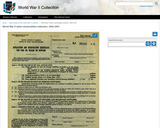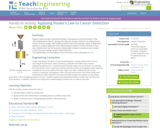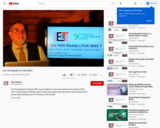
This article explains the effects tariffs have on the country issuing them as well as the recipient country.
- Subject:
- Career and Technical Education
- Material Type:
- Reading
- Date Added:
- 12/01/2023

This article explains the effects tariffs have on the country issuing them as well as the recipient country.

The National Humanities Center presents collections of primary resources compatible with the Common Core State Standards - historical documents, literary texts, and works of art - thematically organized with notes and discussion questions. Topics discussed in this unit include the following: Becoming Modern: America in the 1920s: Factory. Presents art by Charles Sheeler and films from the Ford Motor Company in an examination of the Ford auto assembly plant on the Rouge River near Detroit.

PBS' "American Experience" provides a detailed biography of Franklin Delano Roosevelt. Content includes an overview as well as a focus on Roosevelt's early career, domestic and foreign politics, role as President, and legacy. Supplemental resources include numerous primary source documents, a teacher's guide, and more.

The companion site for this PBS profile surveys the life and career of the peanut-farmer-turned-president and peacemaker.

This collection features highlights from public media's interactive classroom resources and content to support teachers, parents, caregivers, and mentors who are helping at-risk students overcome key learning obstacles on the path from preschool through graduation.

This is a collection of five video lessons about Bill T. Jones, an African American choreographer, director, author, and dancer, and his quest to determine if Abraham Lincoln was a Good Man! or a Good Man? from today's perspective.

This site is the homepage of the American Society of Mechanical Engineers (ASME).

This site contains copyright and fair use guidelines and best practices for educational tools and for the filmmaking and video industry.

Videos from the America on the Move exhibition provide an overview of America's transportation infrastructure history, the road and rail networks we depend on.

Teach language, vocabulary and listening comprehension with Celebrity Vocab clips! [1:25]

A documentary on the creation of the ARPANET which proceeded the Internet.
Published on May 23, 2013

Increase your understanding of what you read by making digital notes in an article. Time to complete: 45-90 minutes

AnnualCreditReport.com is a federally sanctioned website that the three major credit reporting agencies (Equifax, Experian, and TransUnion) have set up. Here consumers can obtain a free annual credit report online, as stipulated under federal law. A small fee is charged if consumers also wish to see their credit score.

Prepare to present by analyzing the culminating task presentation for the application unit.

We will review expectations and then draft our presentation of our culminating task.

Students work through drafting a presentation.

Students deliver their presentation to share their research and product and explain how their task connects to learning earlier in the course. They also reflect on their work, the work of their peers, and the course.

World War II ration memorabilia collection, 1942-1947.
The Office of Price Administration and Civilian Supply was established by Presidential Executive Order 8734 on April 11, 1941, in an effort to control inflation. The civilian supply function of the agency was transferred to the Office of Production Management in August of 1941 and the name was shortened to the Office of Price Administration (OPA). The Emergency Price Control Act (January 30, 1942) established the purposes of the agency as follows: to stabilize prices and rents and prevent unwarranted increases in them; to prevent profiteering, hoarding and speculation; to assure that defense appropriations were not dissipated by excessive prices; to protect those with fixed incomes from undue impairment of their living standards; to assist in securing adequate production; and to prevent a post-emergency collapse of values." The OPA fixed price ceilings on all commodities except farm products and controlled rents in defense areas. The first rationing program, for automobile tires, was initiated December 27, 1941. There were two types of rationing programs. The first was a certificate program, where an applicant had to meet eligibility standards and show need to a local ration board before receiving a certificate permitting purchase of the rationed item. This type of program was applied to ties, automobiles, typewriters, bicycles, rubber footwear and stoves. The second program was a coupon or stamp type for which all civilians were eligible. These programs were administered through local banks and covered foods, fuel oil, gasoline and shoes. Rationing continued throughout World War II and by the end of November 1945 only the sugar and rubber tire rationing programs remained. Tire rationing ceased on December 31, 1945. Sugar rationing continued until June 11, 1947. The Office of Price Administration was dissolved April 1, 1947.

Students explore Hooke's law while working in small groups at their lab benches. They collect displacement data for springs with unknown spring constants, k, by adding various masses of known weight. After exploring Hooke's law and answering a series of application questions, students apply their new understanding to explore a tissue of known surface area. Students then use the necessary relationships to depict a cancerous tumor amidst normal tissue by creating a graph in Microsoft Excel.

Are YOU prepared for almost 100% of your students to have home Internet and a device of their own? In this session, we'll take a look of what may change, what will stay the same, and how YOU can be ready, including a list of 10 tools you will use daily.
Live Q & A Doc: